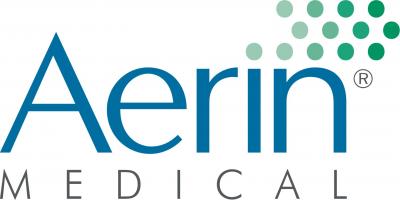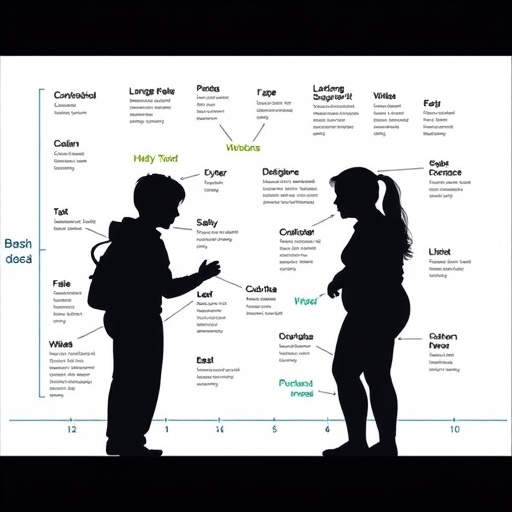Treatment with VivAer, a non-invasive, temperature-controlled, radiofrequency (RF) device, resulted in significant symptom relief, superior to sham control

Credit: (C) Aerin Medical, Inc.
Sunnyvale, Calif. – July 13, 2021 – Aerin Medical Inc., a company dedicated to providing Ear Nose and Throat (ENT) physicians non-invasive solutions for the treatment of chronic nasal airway conditions, today announced that the International Forum of Allergy and Rhinology has published three-month results online from the VATRAC trial, confirming the safety and efficacy of VivAer® for the treatment of nasal airway obstruction (NAO) caused by nasal valve collapse (NVC). In the study, those treated with VivAer showed significant improvement in nasal obstruction symptoms compared to the control group. This is the first randomized controlled trial of a non-invasive, radiofrequency treatment of NVC.
“The outcome of this study provides one of the highest levels of clinical evidence to support the use of VivAer in treating nasal airway obstruction due to nasal valve collapse,” said co-principal investigator Joseph K. Han, M.D., of the Department of Otolaryngology – Head and Neck Surgery at the Eastern Virginia Medical School, in Norfolk, Virginia, and president of the American Rhinologic Society. “New, non-invasive treatment options that don’t require cuts or incisions are remarkable for patients whose daily lives are impacted by the burden of nasal congestion. This study builds on the growing body of evidence that VivAer provides an attractive alternative to traditional surgical procedures for appropriate patients.”
The VivAer procedure for Treatment of Nasal Airway Obstruction Study (VATRAC), a multi-center, prospective, single-blinded, randomized, sham-controlled trial, enrolled 117 patients who had extreme or severe NAO, based on the clinically validated Nasal Obstruction Symptom Evaluation (NOSE) Scale score, with NVC as a primary or significant contributor to their nasal obstruction symptoms. Patients were randomized to undergo in-office treatment with VivAer (treatment group) or an in-office sham procedure that replicated the treatment experience without delivering therapeutic radiofrequency energy (control group).
The VATRAC study met its primary and secondary endpoints, with treated patients demonstrating a significantly superior responder rate (88.3% of the treatment group patients had at least a 20% improvement in NOSE score versus 42.5% in the control group) and symptom reduction (55.1% improvement in mean NOSE score in the treatment group compared to 21.3% improvement in the control group). Statistically significant improvements were observed for treated patients in nasal congestion, nasal blockage, improved breathing and sleeping, and improved breathing during exercise or exertion. The authors noted that patients treated with VivAer experienced NAO symptom relief similar to those who underwent more invasive surgical procedures. Subgroup analysis of the data also showed that VivAer was equally effective in treating patients with static and dynamic (occurring during inhalation) NVC. Treatment with VivAer was generally well tolerated, with no serious adverse events related to the procedure.
NAO is a common condition that impacts more than 20 million Americans1 and can take a heavy toll on daily life. The most common symptoms include nasal congestion or stuffiness, trouble breathing through the nose, trouble sleeping, and difficulty breathing well during exercise or exertion. NVC contributes to nasal obstruction for 73% of highly symptomatic patients,2 but it is often under-diagnosed and left untreated. VivAer offers physicians a unique treatment modality that gently remodels tissue in the nasal valve, increasing its ability to resist collapse.
“We believe that one reason NVC is commonly overlooked is the scarcity of non-invasive treatment options as an alternative to surgical repair,” said Scott Wolf, M.D., founder and chief medical officer of Aerin Medical. “To date, more than 30,000 people have been treated with VivAer, and the strong VATRAC trial results reflect our commitment to building a robust body of clinical evidence to support the safety and effectiveness of this non-invasive device.”
###
About VivAer
VivAer is a non-invasive technology that uses patented, temperature-controlled radiofrequency energy, clinically demonstrated to provide long-term relief from nasal obstruction. VivAer features a thin, wand-like stylus that attaches to a console. The stylus is inserted via the nostril to gently remodel the nasal tissue and improve airflow. It is a single solution that can be used to treat all three anatomical contributors to NAO – the lateral nasal wall, turbinates and septal swell bodies. VivAer does not involve any cutting, freezing, or removal of nasal tissue or bone. Treatment with VivAer may be performed during a routine office visit with local anesthesia. Patients typically experience little discomfort with minimal to no downtime, often able to return to normal activities immediately following treatment.* The VivAer Stylus received CE Mark in 2016 and FDA 510(k) regulatory clearance in December 2017.
About Aerin Medical
Aerin Medical is a privately held, venture-backed company, with U.S. offices in Sunnyvale, California, and Austin, Texas. Aerin’s mission is to provide Ear, Nose and Throat (ENT) physicians with non-invasive solutions for the treatment of chronic nasal airway conditions. The company’s FDA-cleared products, VivAer® for nasal airway obstruction and RhinAer® for chronic rhinitis, leverage Aerin’s proprietary, temperature-controlled technology, which allows ENT physicians to reliably improve patients’ symptoms with an in-office procedure performed with local anesthetic. More than 35,000 patients have been treated with Aerin Medical products to date. For more information, please visit http://www.
Media Contact:
Laura Morgan
951-333-9110
[email protected]
*Individual results may vary.
1 Value calculated based on 2014 US population estimate from US Census and World Bank data in conjunction with incidence numbers cited in: Stewart M, Ferguson BJ, Fromer L. Epidemiology and burden of nasal congestion. Intl J Gen Med. 2010;3:37-45.
2 Clark, David; Del Signore, Anthony; Raithatha, Roheen; Senior, Brent; 2018. Nasal airway obstruction: Prevalence and anatomic contributors; 2018 ENT Ear Nose & Throat Journal; 97(6)
Media Contact
Laura Morgan
[email protected]
Related Journal Article
http://dx.




